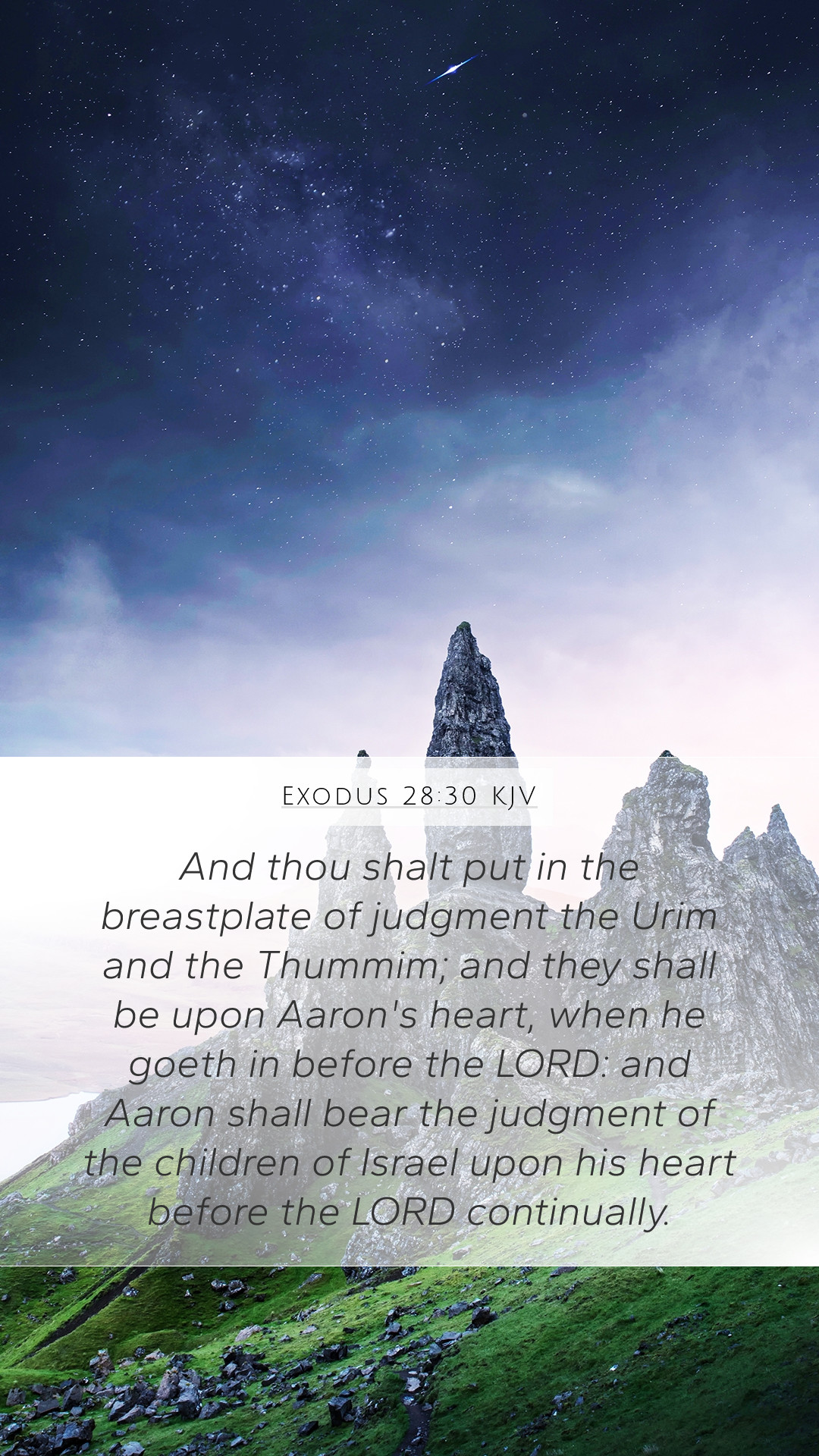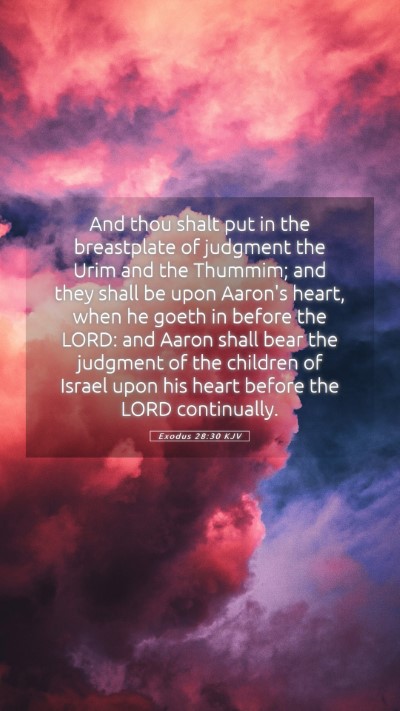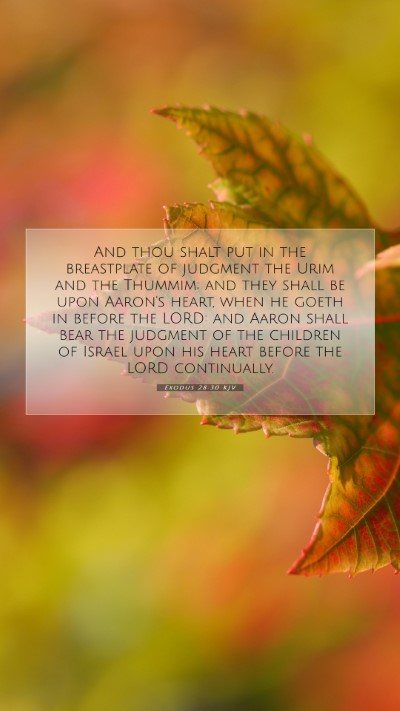Understanding Exodus 28:30
Exodus 28:30 states, "And thou shalt put in the breastplate of judgment the Urim and the Thummim; and they shall be upon Aaron's heart when he goeth in before the Lord: and Aaron shall bear the judgment of the children of Israel upon his heart before the Lord continually."
Overview and Context
This verse is part of the instructions given to Moses regarding the garments of the high priest Aaron. The Urim and Thummim, whose exact nature is often debated, are described as components of the breastplate of judgment. These are believed to be tools used by the high priest to discern God's will and make decisions on behalf of the Israelites.
Insights from Commentaries
-
Matthew Henry's Commentary:
Matthew Henry emphasizes the significance of the Urim and Thummim in decision-making. He highlights that they embodied the principles of divine guidance, representing light (Urim) and perfection (Thummim) which indicates God’s favor. This illustrates that the high priest carried the weight of the community's decisions literally on his heart, symbolizing both a burden and a responsibility to seek God’s will.
-
Albert Barnes' Notes:
Barnes discusses the spiritual implications of the phrase "upon Aaron's heart." He points out that this signifies not only a physical representation but also a spiritual connection—the priest's constant reminder of his duty to intercede for the Israelites. The Urim and Thummim served as divine tools to reveal God’s decisions, reflecting the importance of seeking God's guidance in leadership.
-
Adam Clarke's Commentary:
Adam Clarke explores the historical context of the Urim and Thummim. He notes that their precise function is unclear, yet they were certainly crucial for confirming revelations from God. Clarke suggests that their inclusion in the high priest's breastplate emphasized the necessity of seeking divine insight in all matters affecting the people.
The Significance of Urim and Thummim
The Urim and Thummim represented an ancient practice of divination, used to determine the will of God. Their presence in Aaron's breastplate symbolizes the importance of divine instruction in governance and community life. According to the interpretations, these elements reinforced the priest's role as mediator between God and the people.
Application to Modern Life
While the specific practice of using the Urim and Thummim is not relevant today, the principle of seeking God’s guidance remains crucial. Believers are encouraged to seek God's will through prayer, scripture, and community wisdom, reinforcing the importance of divine counsel in decision-making and spiritual leadership.
Bible Study Insights
- Understanding Scripture in Context: Studying the significance of the high priest's garments helps believers appreciate the roles of leadership and guidance in their own congregations.
- Meaning of Bible Verses: Each component of the high priest’s attire carries a rich symbolic meaning that connects believers to the historical practices of their faith.
- Application of Bible Verses: Integrating the lessons of seeking God’s guidance into daily decisions can lead to a more centered and spiritually attuned life.
Related Scripture References
- Leviticus 8:8: Reference to the Urim and Thummim in relation to the high priest's garments.
- Numbers 27:21: Discusses the role of the high priest in making decisions for the people.
- 1 Samuel 28:6: An example of seeking divine guidance, albeit through different means.
Concluding Thoughts
Exodus 28:30 illustrates how ancient practices of seeking divine guidance are relevant even today. Through careful examination and application of scripture, believers can foster a deeper understanding of their faith and the importance of spiritual leadership. This understanding enriches Bible study groups and enhances personal spiritual journeys, driving home the vital principle of divine reliance in all aspects of life.


